Acute on-set of Hematometra and Hematosalpinx
Acute on-set of Hematometra and Hematosalpinx in a non-communicating Rudimentary Horn of an Unicornuate Uterus: Laparoscopic Management
Introduction
A case of unicornuate uterus with cavitary non-communicating rudimentary horn suddenly revealing with acute abdomen is presented. The patient was managed by laparoscopic miniaccess hemihysterectomy.
Case Report
A 13-year-old girl with a history of primary amenorrhea presented with acute abdominal pain in presence of pelvic mass. Magnetic resonance imaging delineated a left hematometra and hematosalpinx as well as a more normal-appearing right hemiuterus in presence of ipsilateral renal agenesis. Abdominal ultrasound confirmed the diagnosis.
Intervention
At laparoscopy, a massive hemoperitoneum was drained, resulting from a left hematosalpinx and hematometra originating from a left uterine rudimentary horn.
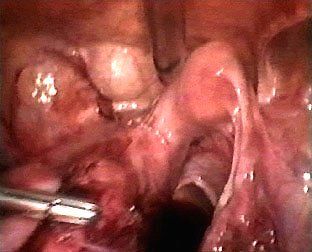
(Click images to enlarge)
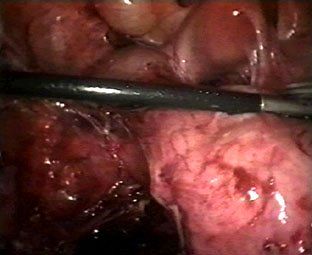
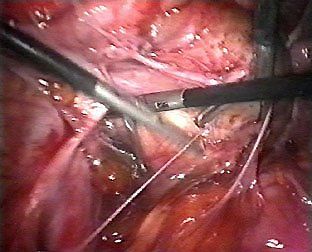
The left hematometra was firstly drained and a salpingectomy was performed.
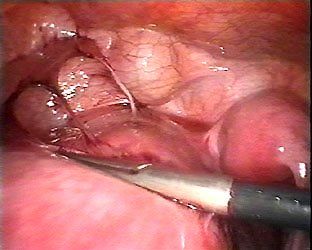
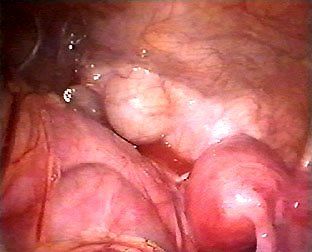
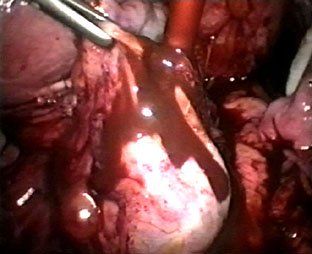
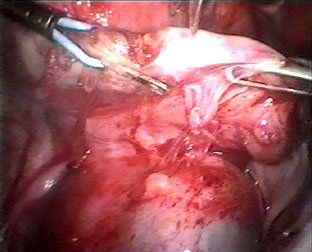


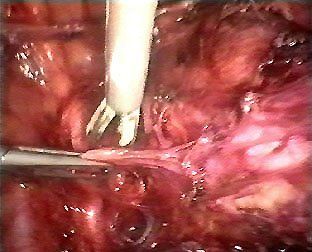
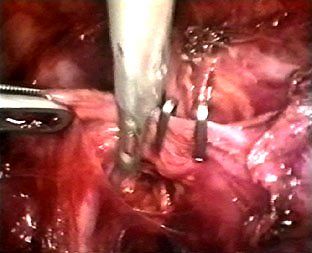
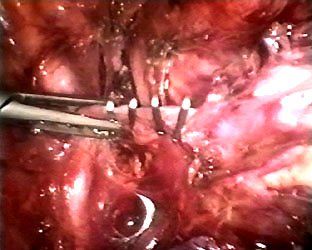
The hematometra was drained to allow complete visualization of the uterine cavity and his relationship with the right hemiuterus and vaginal canal.
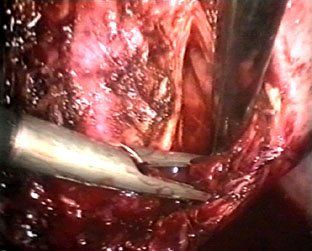
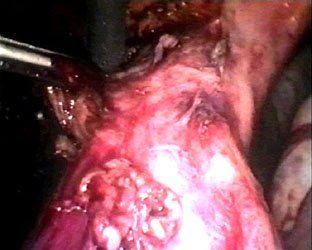
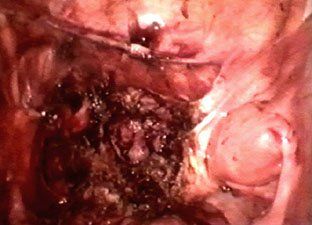
Discussions
Non-communicating uterine horns are rare m?llerian abnormalities ( 39% of uterine anomalies), occasionally presenting with functional endometrial cavities. Surgical removal of the non-communicating horn is commonly performed if it is thought to contain functional endometrium, to prevent endometriosis and pregnancy complications, including miscarriage, ectopic pregnancy, uterine rupture, preterm labor and malpresentations. A review of cases in the world literature reveals that operative laparoscopy can be used to treat these patients successfully. The MRI is excellent in depicting the uterine morphology in cases of unicornuate uterus with rudimentary horn non-communicating with the main cavity and distended by hematometra and associated hematosalpinx. Furthermore evaluating composition, thickness and extension of the uterine septum and aspect of the fundal contour, MRI allows to differentiate definitively between bicornuate uterus and septate uterus. This is a very important distinction which significantly affects patient treatment: in fact, a septate uterus only requires hysteroscopic resection of the septum. The high number of ectopic pregnancies (22%) indicates removal of rudimentary horn and its tube when diagnosed.
Uterine anomalies are identified in 1 in 594 fertile women (0.17%) and in 1 in 29 infertile women (3.5%). This difference is statistically significant (chi 2 = 3,424, df = 1, P < .00001). The prevalence of uterine anomalies in the general population is 1 in 201 women (0.50%).
Literature data indicate the need to suspect a urinary tract anomaly, particularly of the kidney, in all women with a unicornuate uterus. Patients with uterine abnormalities have been reported to have urinary tract anomalies in about 40% of cases, including ectopic kidney, renal agenesis, double renal pelvis, horseshoe kidneys and unilateral medullary sponge kidney. No differences are observed in the frequency of urinary anomalies among the various subclasses of unicornuate uterus.
Conclusion
Congenital uterine malformations are more common than generally recognized. Knowledge concerning their prevalence and varieties is important in recognizing and managing the obstetric and gynecologic complications that may result. An unicornuate uterus with cavitary non-communicating rudimentary horn can cause hematometra and endometriosis leading to acute abdominal pain, infertility, rupture of pregnant rudimentary horn and obstetrical complications with pregnant semi-uterus. The rudimentary horn should be removed if detected.
Related articles
Amara DP, Nezhat F, Giudice L, Nezhat C. Laparoscopic management of a noncommunicating uterine horn in a patient with an acute abdomen. Surg Laparosc Endosc 1997;7:56-59. (Medline)
Console D, Tamburrini S, Barresi D, et al. The value of the MR imaging in the evaluation of Mullerian duct anomalies. Radiol Med 2001; 102:226-232. (Medline)
References:
Reprinted with kind permission from TheTrocar.com
